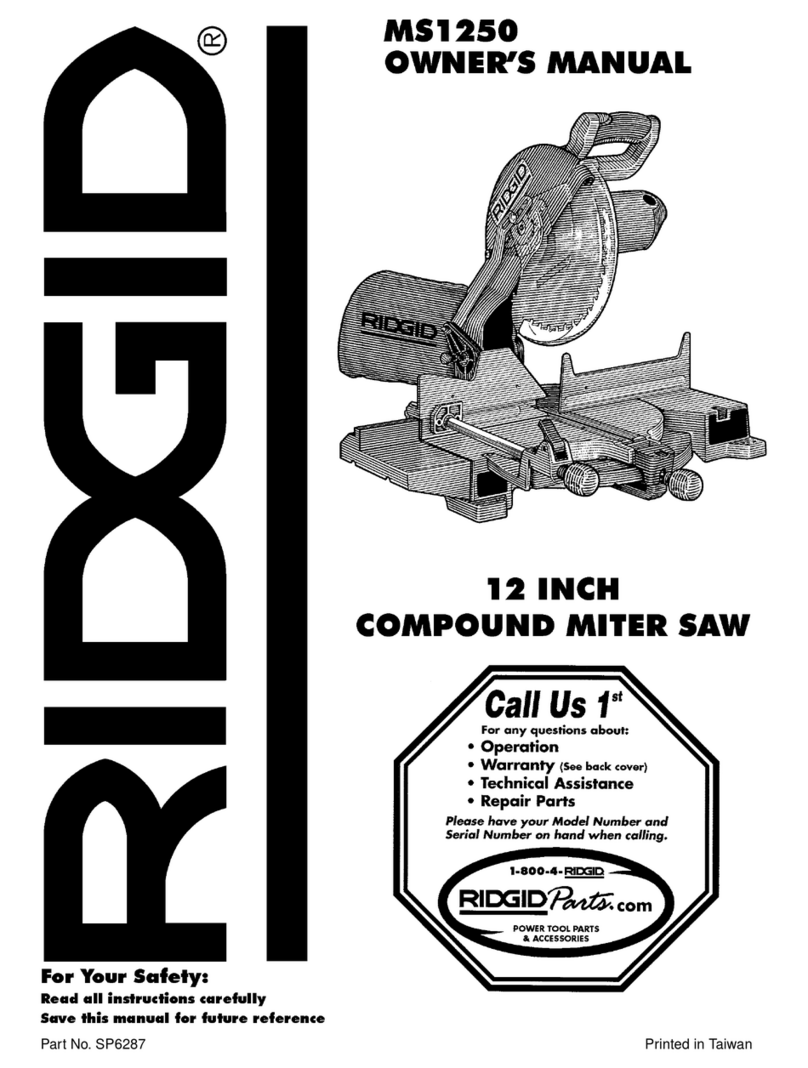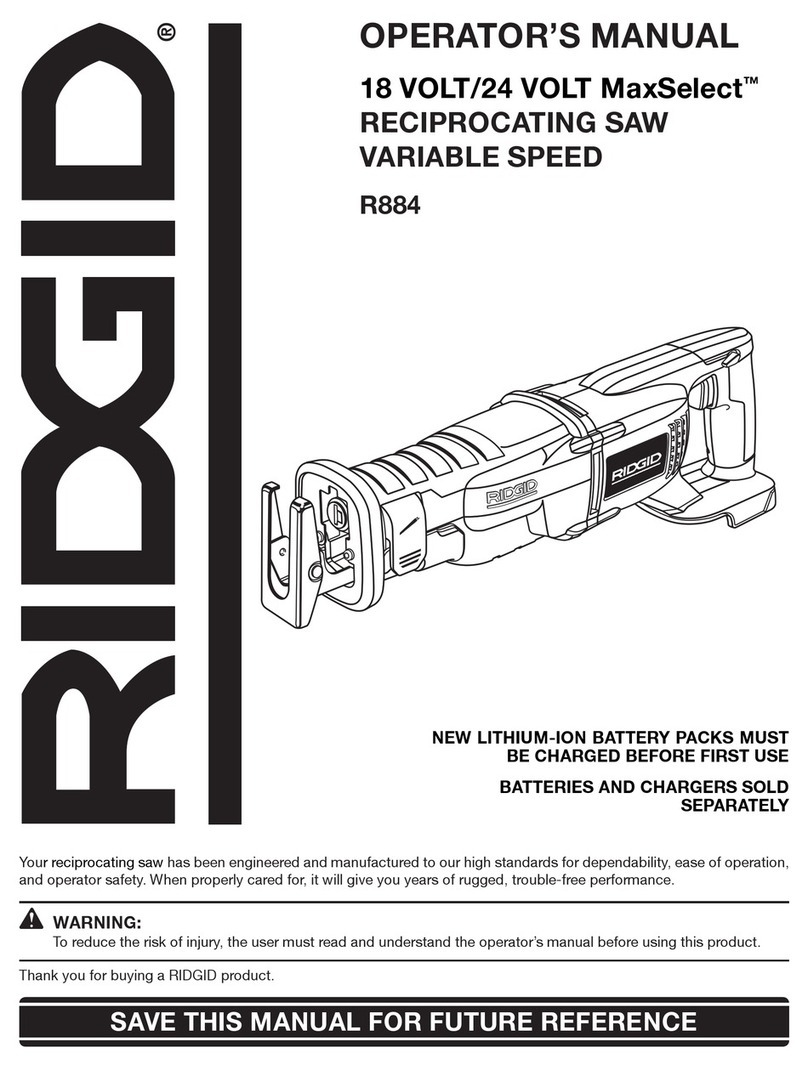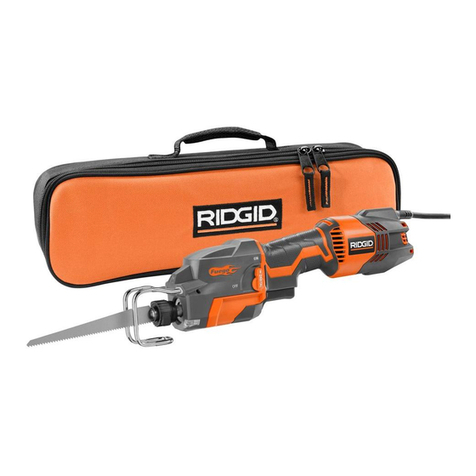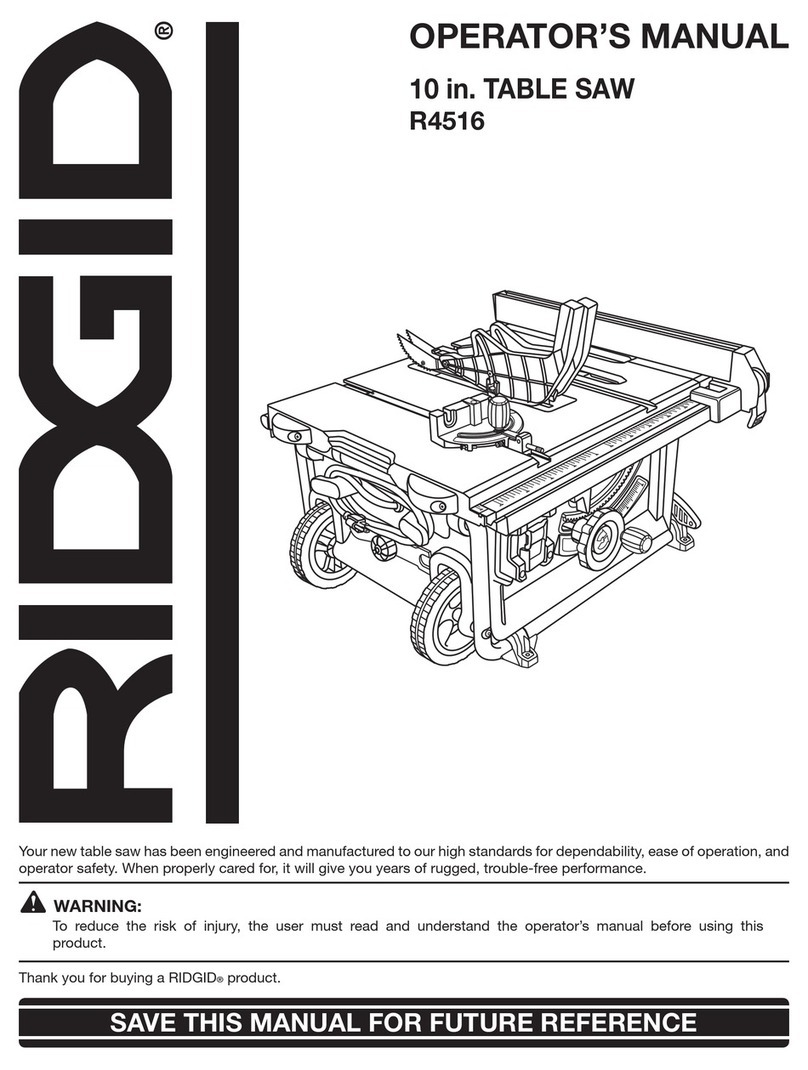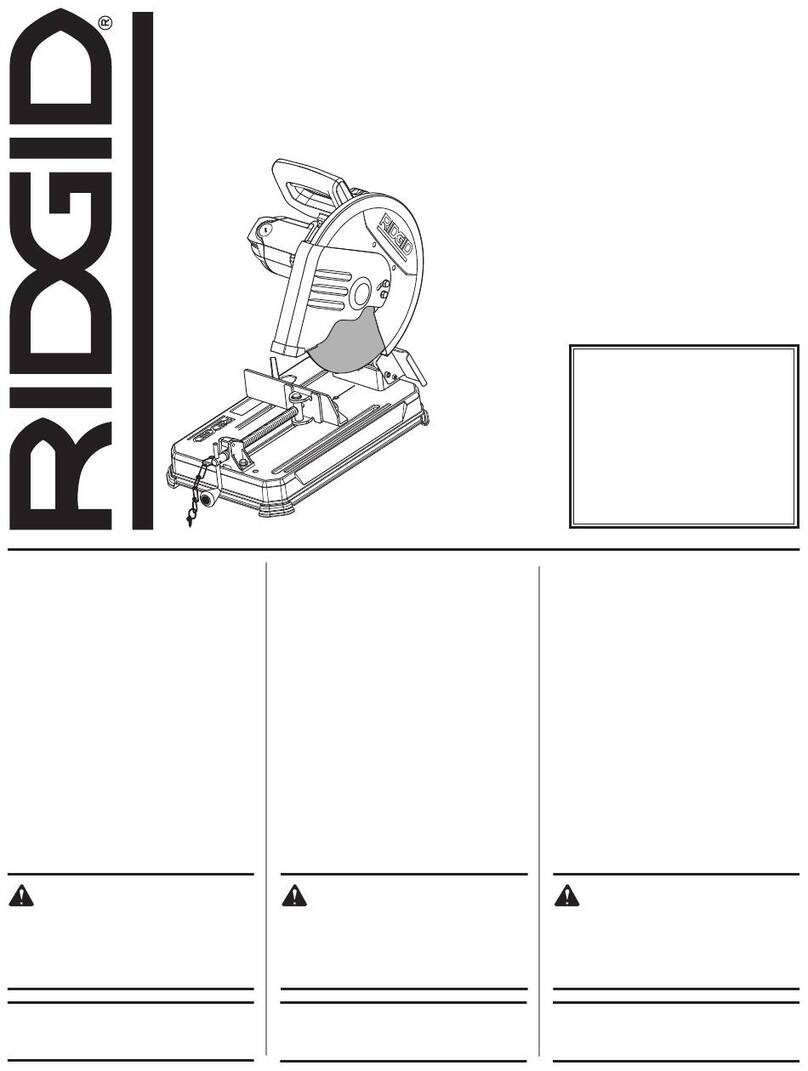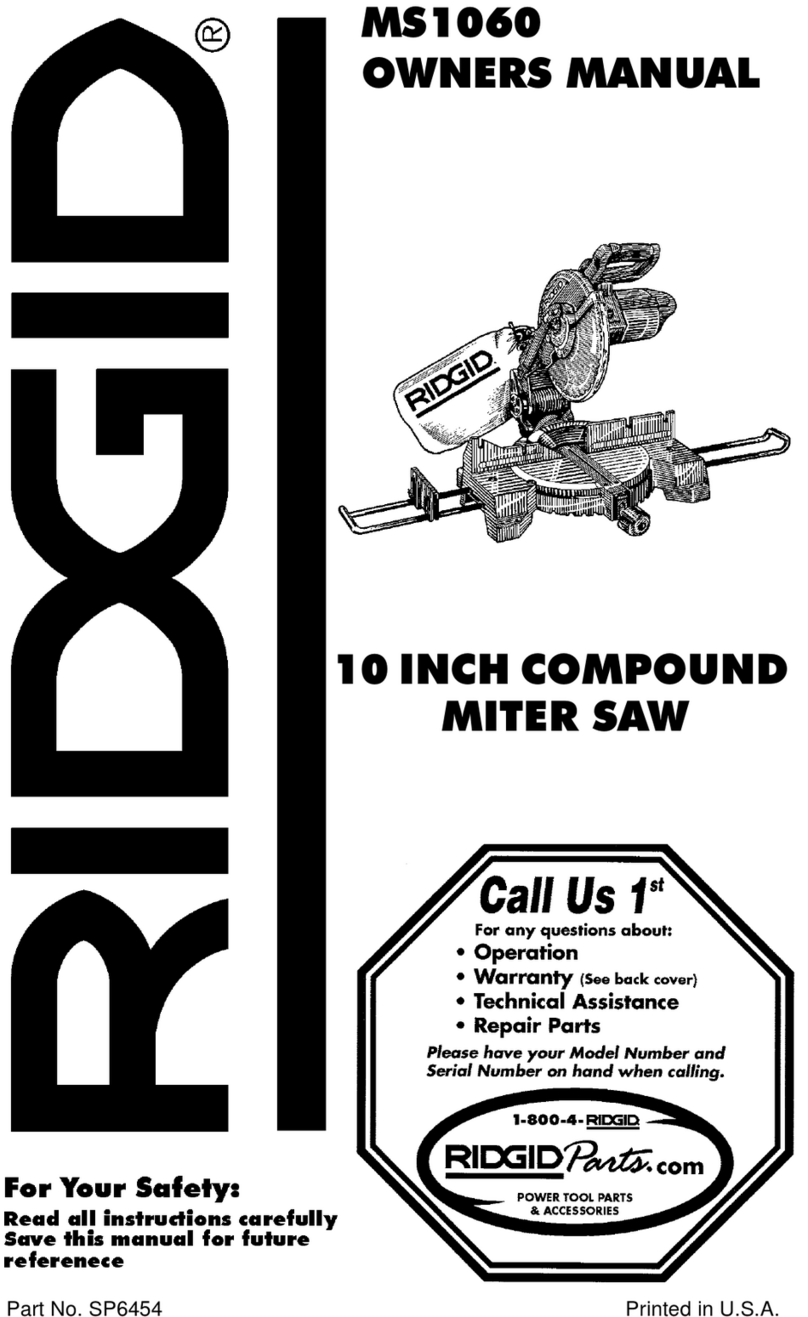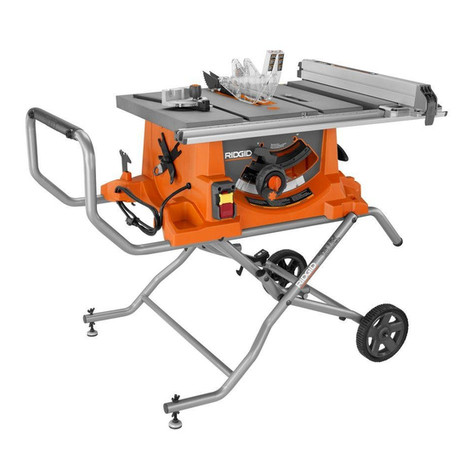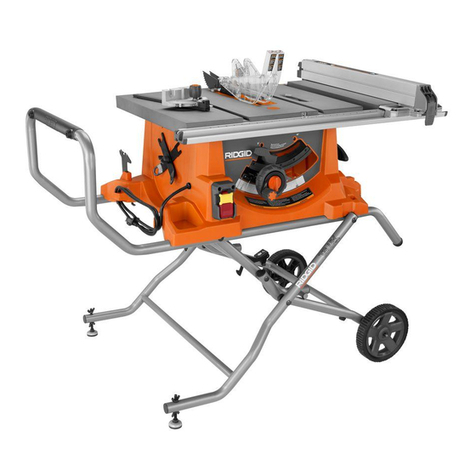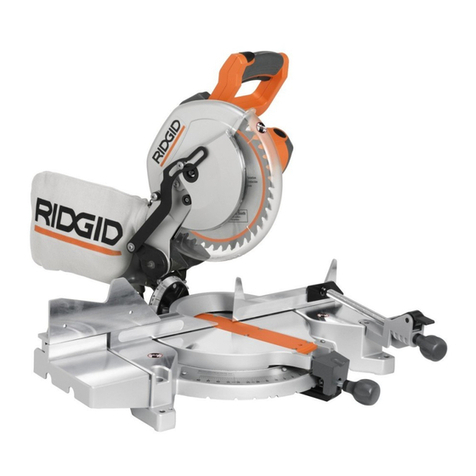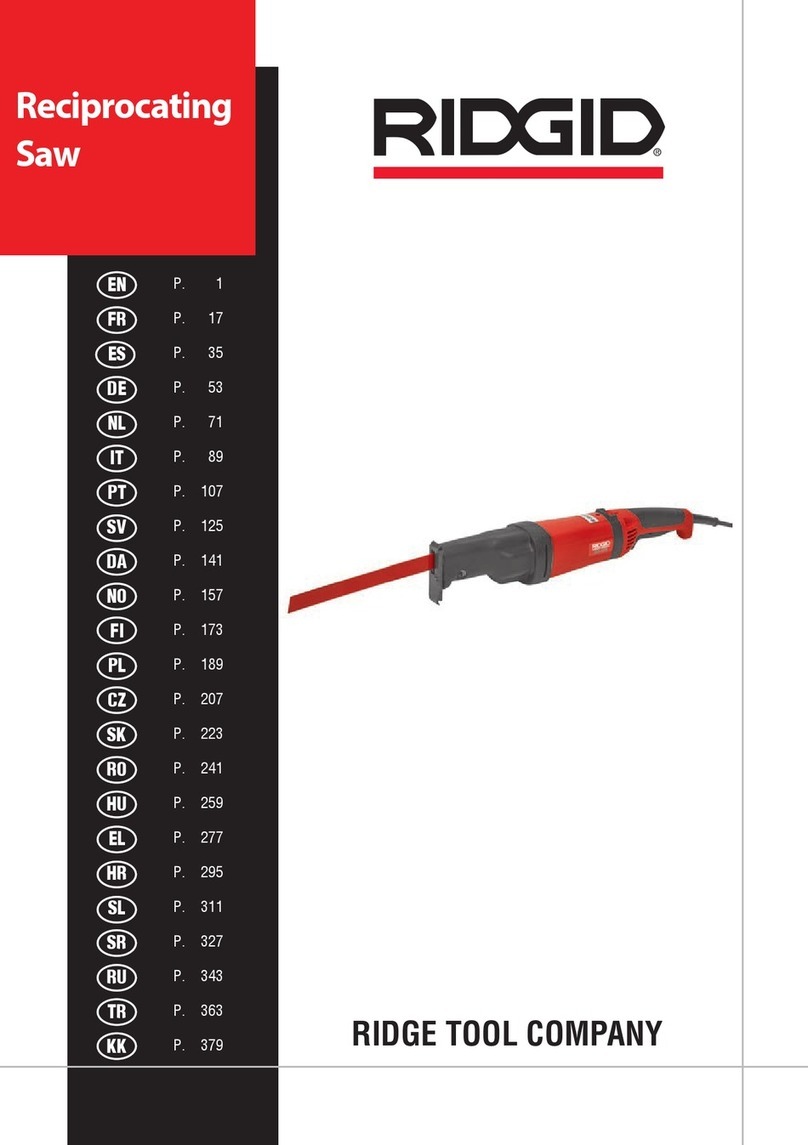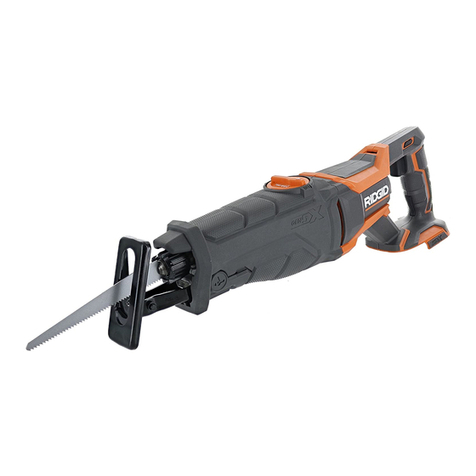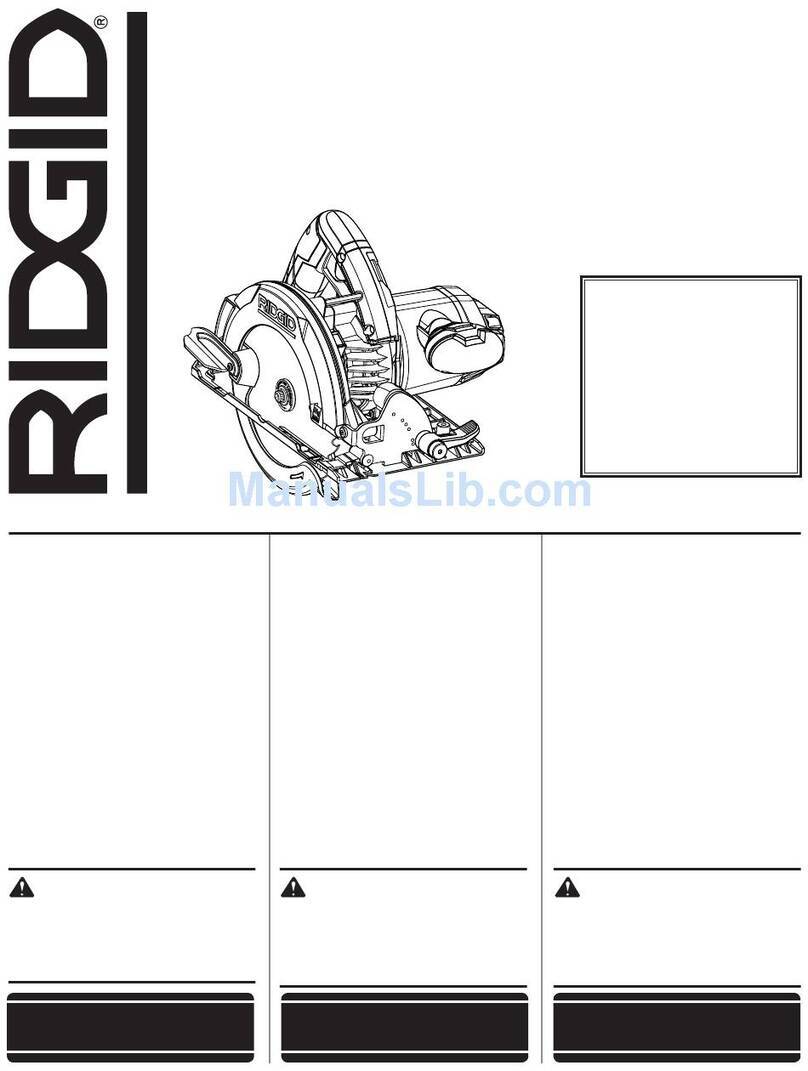
4 - English
top surface of the wood causing the blade to climb out
of the kerf and jump back toward the operator.
Kickback is the result of saw misuse and/or incorrect operat-
ing procedures or conditions and can be avoided by taking
proper precautions as given below:
Maintain a firm grip with both hands on the saw and
position your arms to resist kickback forces. Position
your body to either side of the blade, but not in line
with the blade. Kickback could cause the saw to jump
backwards, but kickback forces can be controlled by the
operator, if proper precautions are taken.
When blade is binding, or when interrupting a cut
for any reason, release the trigger and hold the saw
motionless in the material until the blade comes to a
complete stop. Never attempt to remove the saw from
the work or pull the saw backward while the blade is
in motion or kickback may occur. Investigate and take
corrective actions to eliminate the cause of blade binding.
When restarting a saw in the workpiece, centre the
saw blade in the kerf so that the saw teeth are not
engaged into the material. If a saw blade binds, it may
walk up or kickback from the workpiece as the saw is
restarted.
Support large panels to minimise the risk of blade
pinching and kickback. Large panels tend to sag under
their own weight. Supports must be placed under the
panel on both sides, near the line of cut and near the
edge of the panel.
Do not use dull or damaged blades. Unsharpened or
improperly set blades produce narrow kerf causing ex-
cessive friction, blade binding and kickback.
Blade depth and bevel adjusting locking levers must
be tight and secure before making the cut. If blade
adjustment shifts while cutting, it may cause binding and
kickback.
Use extra caution when sawing into existing walls or
other blind areas. The protruding blade may cut objects
that can cause kickback.
LOWER GUARD FUNCTION
Check the lower guard for proper closing before each
use. Do not operate the saw if the lower guard does
not move freely and close instantly. Never clamp or
tie the lower guard into the open position. If the saw
is accidentally dropped, the lower guard may be bent.
Raise the lower guard with the retracting handle and make
sure it moves freely and does not touch the blade or any
other part, in all angles and depths of cut.
Check the operation of the lower guard spring. If the
guard and the spring are not operating properly, they
must be serviced before use. Lower guard may operate
sluggishly due to damaged parts, gummy deposits, or a
build-up of debris.
The lower guard may be retracted manually only for
special cuts such as “plunge cuts” and “compound
cuts.” Raise the lower guard by retracting handle and
as soon as the blade enters the material, the lower
guard must be released. For all other sawing, the lower
guard should operate automatically.
Always observe that the lower guard is covering the
blade before placing the saw down on bench or floor.
An unprotected, coasting blade will cause the saw to walk
backwards, cutting whatever is in its path. Be aware of the
time it takes for the blade to stop after switch is released.
ADDITIONAL SAFETY WARNINGS
Use clamps or other practical way to secure and sup-
port the workpiece to a stable platform. Holding the
work by hand or against your body is unstable and may
lead to loss of control.
Always wear eye protection with side shields marked
to comply with ANSI Z87.1 when assembling parts,
operating the tool, or performing maintenance. Fol-
lowing this rule will reduce the risk of serious personal
injury.
Protect your lungs. Wear a face or dust mask if the
operation is dusty. Following this rule will reduce the
risk of serious personal injury.
Protect your hearing. Wear hearing protection during
extended periods of operation. Following this rule will
reduce the risk of serious personal injury.
Battery tools do not have to be plugged into an elec-
trical outlet; therefore, they are always in operating
condition. Be aware of possible hazards when not
using your battery tool or when changing accessories.
Following this rule will reduce the risk of electric shock,
fire, or serious personal injury.
Do not place battery tools or their batteries near fire
or heat. This will reduce the risk of explosion and pos-
sibly injury.
Do not crush, drop or damage battery pack. Do not
use a battery pack or charger that has been dropped
or received a sharp blow. A damaged battery is subject
to explosion. Properly dispose of a dropped or damaged
battery immediately.
Batteries can explode in the presence of a source
of ignition, such as a pilot light. To reduce the risk of
serious personal injury, never use any cordless product
in the presence of open flame. An exploded battery can
propel debris and chemicals. If exposed, flush with water
immediately.
Do not charge battery tool in a damp or wet location.
Do not use, store, or charge battery packs or products
in locations where the temperature is less than 50°F
or more than 100°F. Do not store outside or in vehicles.
Under extreme usage or temperature conditions, bat-
tery leakage may occur. If liquid comes in contact with
your skin, wash immediately with soap and water. If
liquid gets into your eyes, flush them with clean water
for at least 10 minutes, then seek immediate medical
attention. Following this rule will reduce the risk of seri-
ous personal injury.
Save these instructions. Refer to them frequently and
use them to instruct others who may use this tool. If you
loan someone this tool, loan them these instructions also.
CIRCULAR SAW SAFETY WARNINGS
